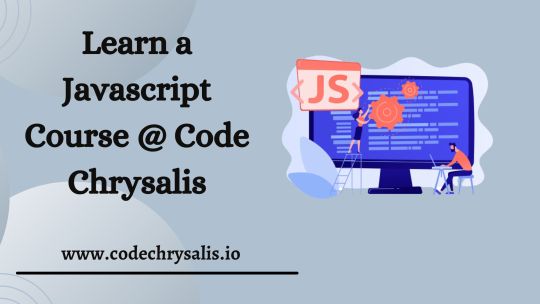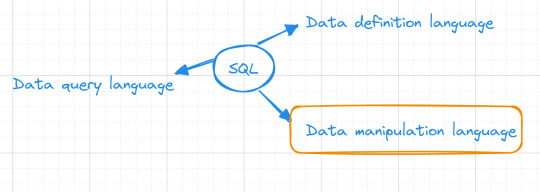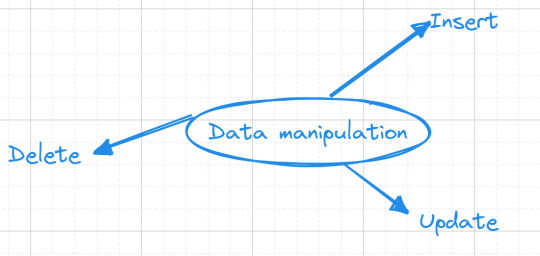#javascript course
Text

A JavaScript training program is offered by Micro Wave Computer Institute to educate students on the fundamentals of JavaScript programming. Lectures, practical exercises, and projects are just a few of the instructional techniques used by the course's knowledgeable and experienced professors. The option to learn JavaScript at their own pace and individualized attention from the teachers will be provided for students. Students who are interested in learning JavaScript programming should take the JavaScript training course. Professionals looking to expand their skill set or learn a new programming language should consider it as well.
https://microwavecomputer.com/index.php/java-script-training-course/
#javascript#javascript tutorial#javascript course#javascript development#programmer#coding#ecommerce#javascript frameworks
0 notes
Text

Java training in chandigarh -Excellence Technology provides the Java training in Chandigarh, offering a comprehensive curriculum and expert guidance to aspiring developers. Our top-notch instructors ensure hands-on learning, covering core Java concepts, advanced topics, and practical projects. With state-of-the-art facilities and a conducive learning environment, students gain the skills and confidence to excel in Java programming. Whether you're a beginner or looking to enhance your Java expertise, Excellence Technology's Java training in Mohali is the perfect platform to launch or elevate your career in software development.
0 notes
Text
Benefits of Using JavaScript: Career Opportunities in It?
JavaScript is one of the most popular scripting languages used by programmers across the world to create dynamic and interactive web content like applications and browsers. In addition, it can calculate, manipulate and validate data and can update and change both HTML and CSS.Benefits of Using JavaScriptJavaScript is a fast and ‘interpreted’ language, that takes far less time in comparison to…

View On WordPress
0 notes
Text
Mastering the Fundamentals: An Introductory JavaScript Course

Introduction:
Welcome to "Mastering the Fundamentals: An Introductory basic JavaScript Course." JavaScript is a powerful programming language that plays a pivotal role in modern web development. Whether you're an aspiring web developer or someone looking to enhance your coding skills, this course is designed to provide you with a solid foundation in JavaScript. In this comprehensive and beginner-friendly course, we will guide you through the fundamental concepts of JavaScript, equipping you with the knowledge and skills necessary to build interactive web applications. Let's embark on this learning journey together and unlock the potential of JavaScript!
Remember to provide compelling reasons why the course you're recommending is the best choice for beginners, such as comprehensive coverage of fundamental concepts, clear explanations, hands-on projects, and expert guidance. Including testimonials or reviews from previous learners who found success with the course can also add credibility to your recommendation.
What is JavaScript and why is it important in web development?
JavaScript is a high-level, interpreted programming language primarily used for web development. It plays a crucial role in enhancing the interactivity and functionality of websites. Here's why best course to learn javascript is important in web development:
Client-Side Interactivity: JavaScript allows developers to create dynamic and interactive elements on web pages that respond to user actions in real-time. It enables features like form validation, interactive maps, sliders, animations, and pop-ups, enhancing the overall user experience.
Browser Compatibility: JavaScript is supported by all major web browsers, including Chrome, Firefox, Safari, and Edge. This widespread support makes best javascript course for beginners a reliable choice for creating web applications that can run seamlessly across different browsers and devices.
DOM Manipulation: JavaScript provides the ability to access and manipulate the Document Object Model (DOM) of a web page. With DOM manipulation, developers can modify the content, structure, and styling of web pages dynamically, allowing for dynamic updates without requiring a page reload.
Asynchronous Programming: JavaScript supports asynchronous programming through techniques like AJAX (Asynchronous JavaScript and XML) and Promises. Asynchronous programming enables web applications to retrieve and update data from servers without blocking or freezing the user interface, resulting in faster and more responsive web experiences.
Frameworks and Libraries: JavaScript has a vast ecosystem of frameworks and libraries such as React, Angular, and Vue.js, which simplify the development of complex web applications. These frameworks provide pre-built components, efficient data binding, and state management, enabling developers to build scalable and maintainable applications.
Full-Stack Development: JavaScript is not limited to front-end development. With technologies like Node.js, JavaScript can also be used for server-side programming. This allows developers to use a single programming language for both client-side and server-side development, facilitating efficient communication and code sharing between different layers of a web application.
Market Demand: JavaScript is one of the most widely used programming languages, with a vast developer community and numerous job opportunities. Proficiency in JavaScript opens doors to various roles in web development, making it a valuable skill for aspiring developers.
The history and evolution of JavaScript.
The history and evolution of JavaScript trace back to the early days of the web. Here's a brief overview:
Birth at Netscape:
JavaScript was created by Brendan Eich at Netscape Communications in 1995. Originally called "Mocha" and later renamed "LiveScript," it was designed as a lightweight scripting language for adding interactivity to web pages.
Collaboration with Sun Microsystems:
To leverage the popularity of Java, Netscape collaborated with Sun Microsystems and renamed the language to "JavaScript" in 1995. Despite the name, JavaScript is distinct from the Java programming language.
Standardization as ECMAScript:
As JavaScript gained traction, the need for a standardized version emerged. In 1997, Ecma International, a standards organization, created a technical committee known as TC39 to develop and maintain the ECMAScript standard. ECMAScript is the official name for the standardized version of JavaScript.
ECMAScript Versions:
Over the years, ECMAScript has undergone several significant updates and revisions. The major versions include ECMAScript 1 (1997), ECMAScript 2 (1998), ECMAScript 3 (1999), ECMAScript 4 (abandoned), ECMAScript 5 (2009), ECMAScript 6 (ES6/ES2015, released in 2015), ECMAScript 7 (ES7/ES2016), ECMAScript 8 (ES8/ES2017), and subsequent versions.
ES6 and Modern JavaScript:
ECMAScript 6, also known as ES6 or ES2015, introduced significant enhancements to the language. It added new syntax, features like arrow functions, classes, modules, and improved support for asynchronous programming with Promises. ES6 marked a turning point for JavaScript and brought a more modern and structured approach to development.
0 notes
Text

Enhance your programming skills and dive into the world of JavaScript with Code Chrysalis! Join our esteemed institution and enroll in our comprehensive JavaScript Course today. Whether you're a beginner looking to embark on your coding journey or an experienced developer seeking to sharpen your skills, our expert instructors will guide you through a transformative learning experience.
#coding workshops online#career development support#javascript course#part time coding classes#software engineering immersive
0 notes
Text
I come across a great site to learn coding, I don’t see a lot of people talking about it tho. (There is an app too!)
This site has python 101 for free (and many another, tho course from 102 and up aren’t free)

Its has a cute design and great at explaining the small details that some teachers don’t explain ✨

There is also many exercises in each chapter of the lessons.
You can check more about it from there official site ✨
Happy coding you all 🫶🏻
#codeblr#python#coding#learn to code#programming#python programming#html#javascript#javafullstackdeveloper#learn sql#sql course#sqldeveloper#phpwebsitedevelopment#php programming
2K notes
·
View notes
Text




deeply obsessed with @satisfiedskye's narrator this week ( & forever ) ~
#uwu art#The Stanley Parable#The Stanley Parable Ultra Deluxe#TSP Narrator#JavaScript#just a little#Selfcest#Paraverse#my most favorite soggy narrator who i kiss on the cheeks & lips#god he's so hot guys do you see him#you will love him immediately or i will get you#ollie is the only narrator i want to hear about when it comes to ' stanleys that ruin their narrators ' because skele gets it#next to tomie & i with goreguts of course but i digress#ALSO I HAVE SO MUCH BACKLOG AS USUAL
206 notes
·
View notes
Text
writes with python ”ugh I wanna write javascript” -> writes with javascript ”ugh I wanna write c++” -> writes with c++ ”I have made a horrible mistake”
#i’m trying to not start that one C++ course that haunts me#ever since I first signed uo for it last january but dropped it in february bc one (1) task took me a month#and by month I mean like I was at it basically everyday#and it has 100 of those#(it’s like leetcode things but with C++ (I’ve done 2 courses like that but with Python so thought I’d do it quick bc the only difference is#the language))#granted I had 0 knowledge of C++ before that so like hm#did sign up now for an entrylevel C++ course bc istg I’ll finish that course someday it’s in my mind constantly#(currently am writing with javascript and I’m getting bored)#(and I want that C++ course to start already but like it’s good it hasn’t yet bc got lots of other stuff as well)#codeblr#2024#february 2024
90 notes
·
View notes
Text






WIP - POSTCARD
Just mock-ups for now, as always, but new project!
#merel codes#jcink codes#jcink code#jcink skins#jcink skin#jcink#jcink wip#no idea what i'm going to do with it yet#but i'm sick and sad and just generally upset and my javascript course is ridiculous#and i just needed something to quiet my brain with
21 notes
·
View notes
Text
SQL Fundamentals #2: SQL Data Manipulation

In our previous database exploration journey, SQL Fundamentals #1: SQL Data Definition, we set the stage by introducing the "books" table nestled within our bookstore database. Currently, our table is empty, Looking like :
books
| title | author | genre | publishedYear | price |
Data manipulation

Now, let's embark on database interaction—data manipulation. This is where the magic happens, where our "books" table comes to life, and we finish our mission of data storage.
Inserting Data
Our initial task revolves around adding a collection of books into our "books" table. we want to add the book "The Great Gatsby" to our collection, authored F. Scott Fitzgerald. Here's how we express this in SQL:
INSERT INTO books(title, author, genre, publishedYear, price) VALUES('The Great Gatsby', 'F. Scott Fitzgerald', 'Classic', 1925, 10.99);
Alternatively, you can use a shorter form for inserting values, but be cautious as it relies on the order of columns in your table:
INSERT INTO books VALUES('The Great Gatsby', 'F. Scott Fitzgerald', 'Classic', 1925, 10.99);
Updating data
As time goes on, you might find the need to modify existing data in our "books" table. To accomplish this, we use the UPDATE command.For example :
UPDATE books
SET price = 12.99
WHERE title = 'The Great Gatsby';
This SQL statement will locate the row with the title "The Great Gatsby" and modify its price to $12.99.
We'll discuss the where clause in (SQL fundamentals #3)
Deleting data
Sometimes, data becomes obsolete or irrelevant, and it's essential to remove it from our table. The DELETE FROM command allows us to delete entire rows from our table.For example :
DELETE FROM books WHERE title = 'Moby-Dick';
This SQL statement will find the row with the title "Moby-Dick" and remove it entirely from your "books" table.
To maintain a reader-friendly and approachable tone, I'll save the discussion on the third part of SQL, which focuses on data querying, for the upcoming post. Stay tuned ...
#studyblr#code#codeblr#javascript#java development company#study#progblr#programming#studying#comp sci#web design#web developers#web development#website design#webdev#website#tech#sql#sql course#mysql#datascience#data#backend
34 notes
·
View notes
Text


Late night studies
#dark academia#study space#studygram#study motivation#studyspo#studywithme#study aesthetic#studyblr#stem studyblr#computer science#computer#javascript#java course#creative coding#coding
225 notes
·
View notes
Text

Discover how to use Python for web scraping, a potent method of obtaining data from websites. BeautifulSoup and Requests are two Python packages that make this process easier and allow for the smooth parsing of HTML structures.
#Best python course in kanpur#python#programming#coding#java#javascript#programmer#developer#html#snake#coder#code#computerscience#technology#css#machinelearning#pythonprogramming#linux#ballpython#php#datascience#reptile#snakes#reptiles#snakesofinstagram#software#reptilesofinstagram#webdevelopment#webdeveloper#tech
8 notes
·
View notes
Text
crazy to me that the default rpgm 'select item' dialogue does not show item descriptions
#bobtalk#miserably tried to modify it (w/ no javascript knowledge let alone previous plugin making) for. i dont know. a While#before eventually getting the bright idea to just use script calls to open the item menu and then grab the last used item's id#of course then the fucking. eventing got super messed up. but eventually eventually i realized i was badly overcomplicating matters#so everything worked out in the end. heart emoji#ok NOW. now. i will do my damn schoolwork. lmao.#man im hungry as fuck time just kind of. uhhh. flew by me.#you know what they say about having fun! ahahhhhhah.#oh this is all mz btw. i had a very funny (to me) very (objectively) high effort idea.dont worry about it#i still need to do a couple updates to my fnafgame but like its not like anyone is eagerly waiting on that one so i can take my time loll
3 notes
·
View notes
Text
What are the Characteristics of JavaScript?
JavaScript may be a programming language that’s broadly useful for developing intelligent web pages and web applications. It may be a high-level, energetic, and deciphered dialect that’s bolstered by all advanced web browsers. JavaScript permits engineers to include usefulness to their web pages. For instance approving user input, enlivening page components, and creating dynamic client…

View On WordPress
0 notes
Text
Java Learning Roadmap: From Basics to Mastery
Embarking on a Java learning journey from the comfort of your home offers unparalleled flexibility and convenience. Whether your aspirations lie in web development, Android app creation, or backend coding, Java serves as a robust foundation.

This comprehensive guide outlines a step-by-step approach to help beginners effectively grasp Java concepts and skills from the comfort of their own space.
1. Establish Clear Learning Objectives: Prior to diving into Java learning, take a moment to define your goals. Determine what you aim to achieve with your Java proficiency, whether it's gaining foundational knowledge, tackling projects, or pursuing a career in software development.
2. Select High-Quality Learning Resources: Choose your learning materials wisely. Opt for reputable online platforms such as Udemy, Coursera, or Codecademy that offer well-structured Java courses tailored to beginners. Supplement your learning with books, video tutorials, and interactive exercises to enhance comprehension.
3. Start with Fundamental Concepts: Begin your Java journey by focusing on fundamental principles. Familiarize yourself with core concepts like variables, data types, loops, conditionals, and object-oriented programming basics. Online tutorials and interactive exercises serve as invaluable resources for grasping these foundational elements.
4. Cultivate Regular Practice Habits: Consistent practice is key to mastering Java. Allocate dedicated time each day to code, solve programming challenges, and engage in project work. Platforms like LeetCode, HackerRank, and CodeSignal provide a plethora of coding challenges to hone your skills and build confidence.
5. Engage in Project Development: Apply your newfound knowledge by embarking on real-world projects. Start with simple tasks, such as creating a calculator, a to-do list app, or a basic game. As you grow more confident, tackle more complex projects that align with your learning objectives and interests.

6. Connect with the Java Community: Join online forums, discussion groups, and social media communities to interact with fellow Java enthusiasts and experts. Platforms like Stack Overflow, Reddit, and GitHub offer invaluable opportunities to seek advice, share knowledge, and gain insights from experienced developers.
7. Embrace Constructive Feedback: Don't shy away from seeking feedback on your code and projects. Embrace constructive criticism as a catalyst for growth and improvement. Participate in code reviews, collaborate with peers, and leverage online resources to continuously refine your Java skills.
8. Stay Abreast of Developments: Java is a dynamic language with frequent updates and advancements. Stay informed about the latest trends, tools, and technologies in the Java ecosystem by following industry blogs, attending webinars, and exploring new frameworks and libraries.
9. Explore Advanced Topics: Once you've mastered the basics, delve into more advanced Java topics such as multithreading, networking, and database connectivity. Advanced Java courses, tutorials, and books offer deeper insights into these complex concepts, enabling you to expand your skill set further.
10. Build a Stellar Portfolio: As your Java proficiency grows, assemble a portfolio to showcase your projects and achievements. A well-curated portfolio serves as a compelling demonstration of your skills and capabilities to potential employers or clients. Highlight your standout projects, provide detailed descriptions, and showcase your problem-solving prowess to make a lasting impression.
Conclusion: Learning Java from home is an enriching journey that empowers individuals to unlock countless opportunities in software development. By setting clear goals, leveraging quality resources, practicing consistently, and engaging with the Java community, you can confidently master this versatile programming language and chart a successful career path in technology. Remember, dedication, perseverance, and a genuine passion for learning are the driving forces behind your Java learning journey's success.
#technology#java#javaprogramming#javascript#computerscience#programming#developer#java course#java training#java training course
2 notes
·
View notes
Text
Understanding Object-Oriented Programming and OOPs Concepts in Java
Object-oriented programming (OOP) is a paradigm that has revolutionized software development by organizing code around the concept of objects. Java, a widely used programming language, embraces the principles of OOP to provide a robust and flexible platform for developing scalable and maintainable applications. In this article, we will delve into the fundamental concepts of Object-Oriented Programming and explore how they are implemented in Java.

Object-Oriented Programming:
At its core, Object-Oriented Programming is centered on the idea of encapsulating data and behavior into objects. An object is a self-contained unit that represents a real-world entity, combining data and the operations that can be performed on that data. This approach enhances code modularity, and reusability, and makes it easier to understand and maintain.
Four Pillars of Object-Oriented Programming:
Encapsulation: Encapsulation involves bundling data (attributes) and methods (functions) that operate on the data within a single unit, i.e., an object. This encapsulation shields the internal implementation details from the outside world, promoting information hiding and reducing complexity.
Abstraction: Abstraction is the process of simplifying complex systems by modeling classes based on essential properties. In Java, abstraction is achieved through abstract classes and interfaces. Abstract classes define common characteristics for a group of related classes, while interfaces declare a set of methods that must be implemented by the classes that implement the interface.
Inheritance: Inheritance is a mechanism that allows a new class (subclass or derived class) to inherit properties and behaviors of an existing class (superclass or base class). This promotes code reuse and establishes a hierarchy, facilitating the creation of specialized classes while maintaining a common base.
Polymorphism: Polymorphism allows objects of different types to be treated as objects of a common type. This is achieved through method overloading and method overriding. Method overloading involves defining multiple methods with the same name but different parameters within a class, while method overriding allows a subclass to provide a specific implementation of a method that is already defined in its superclass.
Java Implementation of OOP Concepts:
Classes and Objects: In Java, a class is a blueprint for creating objects. It defines the attributes and methods that the objects of the class will have. Objects are instances of classes, and each object has its own set of attributes and methods. Classes in Java encapsulate data and behavior, fostering the principles of encapsulation and abstraction.
Abstraction in Java: Abstraction in Java is achieved through abstract classes and interfaces. Abstract classes can have abstract methods (methods without a body) that must be implemented by their subclasses. Interfaces declare a set of methods that must be implemented by any class that implements the interface, promoting a higher level of abstraction.
Inheritance in Java: Java supports single and multiple inheritances through classes and interfaces. Subclasses in Java can inherit attributes and methods from a superclass using the extends keyword for classes and the implements keyword for interfaces. Inheritance enhances code reuse and allows the creation of specialized classes while maintaining a common base.
Polymorphism in Java: Polymorphism in Java is manifested through method overloading and overriding. Method overloading allows a class to define multiple methods with the same name but different parameters. Method overriding occurs when a subclass provides a specific implementation for a method that is already defined in its superclass. This enables the use of a common interface for different types of objects.
Final Thoughts:
Object-oriented programming and its concepts form the foundation of modern software development. Java, with its robust support for OOP, empowers developers to create scalable, modular, and maintainable applications. Understanding the principles of encapsulation, abstraction, inheritance, and polymorphism is crucial for harnessing the full potential of OOPs concepts in Java. As you continue your journey in software development, a solid grasp of these concepts will be invaluable in designing efficient and effective solutions.
#javascript#javaprogramming#java online training#oops concepts in java#object oriented programming#education#technology#study blog#software#it#object oriented ontology#java course
2 notes
·
View notes